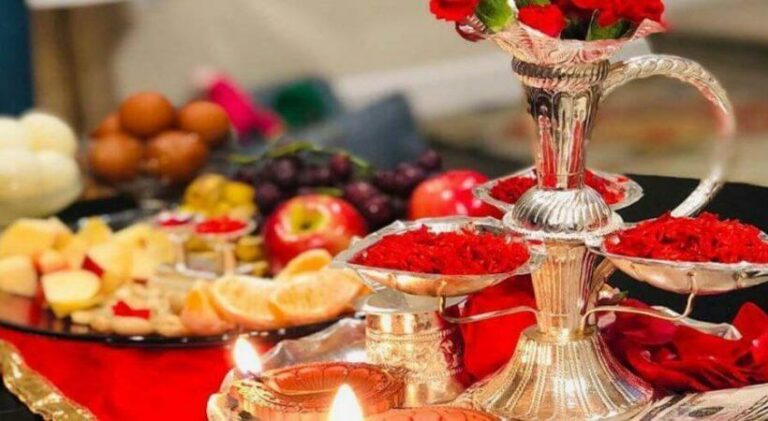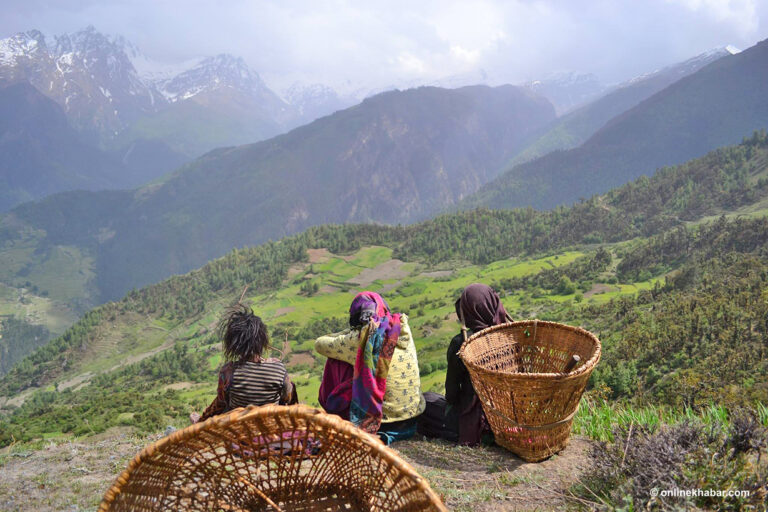“Nepal : A Vibrant Tapestry of Ethnicity ,Religion, and Tradtition “
Nepal, nestled in the Himalayas between China and India, boasts a rich cultural tapestry that reflects its diverse ethnic, religious, and linguistic heritage. Its culture is a complex amalgamation of various influences, traditions, and practices that have evolved over centuries. Here’s an in-depth exploration of the cultural tapestry of Nepal: Ethnic Diversity Nepal is home to over 125 ethnic groups, each with its unique customs, languages, and traditions. Some of the prominent ethnic groups include:

– Chhetri and Brahmin: Traditionally the ruling and priestly classes, they follow Hindu customs and speak Nepali, the national language.
– Newar: Indigenous to the Kathmandu Valley, the Newars are for their rich art, architecture, and festivals. They practice a syncretic blend of Hinduism and Buddhism and speak Newari.
– Tamang, Sherpa, and Rai: to the mountainous regions, these groups are known for their mountaineering skills and Buddhist practices.
– Tharu: Inhabitants of the Terai region, the Tharu have distinct customs and traditions, including unique dance forms and festivals. Religious Practices Nepal is predominantly Hindu, with a significant Buddhist minority. Other religions practiced include Islam, Christianity, and various indigenous faiths.
– Hinduism: Hinduism in Nepal is characterized by its unique blend of local practices and beliefs. Key festivals include Dashain, Tihar, and Teej. Temples, shrines, and religious rituals are integral to daily life.
– Buddhism: Nepalis the birthplace of Lord Buddha, and Buddhist traditions are deeply ingrained, especially among the Tibetan-influenced ethnic groups. Key sites include Lumbini, Swayambhunath (the Monkey Temple), and Boudhanath Stupa.
- Syncretism:
Many Nepalese practice a blend of Hindu and Buddhist traditions, participating in festivals and rituals of both religions. Languages Nepal’s linguistic landscape is as diverse as its ethnic composition. Nepali, written in Devanagari script, is the official language, but over 123 languages are spoken across the country. These languages belong to different language families, including Indo-Aryan, Tibeto-Burman, and Austro-Asiatic. Festivals and Celebrations Nepal’s calendar is filled with festivals that reflect its religious and cultural diversity.
– Dashain: The longest and most important Hindu festival, celebrated with family gatherings, animal sacrifices, and the worship of the goddess Durga.
– Tihar: Known as the festival of lights, Tihar honors various animals like crows, dogs, and cows, and culminates in the worship of Laxmi, the goddess of wealth.
– Buddha Jayanti: Celebrated by Buddhists to mark the birth, enlightenment, and death of Lord Buddha.
– Indra Jatra: A major Newar festival in Kathmandu, celebrating the end of the monsoon and honoring Indra, the god of rain.
– Maghe Sankranti: A harvest festival celebrated by various ethnic groups, marking the beginning of the holy month of Magh. Art and Architecture Nepal is renowned for its traditional art forms, which include intricate woodcarving, stone sculpture, and metalwork. The architecture is a blend of Hindu and Buddhist styles, with notable structures like:
– Pashupatinath Temple A UNESCO World Heritage Site and a significant Hindu temple dedicated to Lord Shiva.
– Swayambhunath and Boudhanath Stupas: Important Buddhist sites with distinct architectural styles and rich historical significance.
– Patan Durbar Square: Famous for its Newari architecture, intricate carvings, and ancient temples.
Music and Dance Music and dance are integral to Nepali culture, varying widely among different ethnic groups.
– Classical Music: Influenced by Indian classical traditions, with instruments like the sitar, tabla, and harmonium.
– Folk Music: Includes various regional styles and instruments like the madal (a type of drum), sarangi (a string instrument), and bansuri (bamboo flute).
– Dance:Traditional dances like the Lakhe dance, Tamang Selo, and Newari masked dances are performed during festivals and special occasions.
Cuisine Nepali cuisine is a reflection of the country’s geographic and cultural diversity. Staple foods include rice, lentils, and vegetables, often accompanied by achar (pickle). Regional specialties include:
– Dal Bhat: A traditional meal consisting of rice, lentil soup, vegetables, and sometimes meat.
– Momo: Tibetan-style dumplings filled with meat or vegetables, popular across the country.
– Newari Cuisine: Known for its variety and rich flavors, including dishes like yomari (sweet dumplings) and chatamari (a type of pancake).
Traditional Clothing Traditional clothing varies by region and ethnicity:
– Daura Suruwal and Gunyu Cholo: Traditional attire for men and women, respectively, among the Hindu majority.
– Sherpa and Tibetan Dress: Includes thick, warm clothing suitable for high-altitude regions, like the chuba (a long coat).
– Newari Dress: Distinctive attire that includes haku patasi (a black sari with a red border) for women and traditional tunics and caps for men.

Social Structure and Customs Nepalese society is traditionally hierarchical, with social status often linked to caste, ethnicity, and family lineage. Respect for elders, community cooperation, and hospitality are key social values. Marriage customs vary widely, with both arranged and love marriages being common. Extended families living together is a traditional practice, though nuclear families are becoming more common in urban areas.
Conclusion Nepal’s cultural tapestry is a vibrant and dynamic mosaic, shaped by its historical evolution, geographical diversity, and the interplay of various ethnic, religious, and linguistic influences. This rich cultural heritage is a source of pride for Nepalese people and continues to be a fundamental aspect of their identity and way of life.
Comment Here!